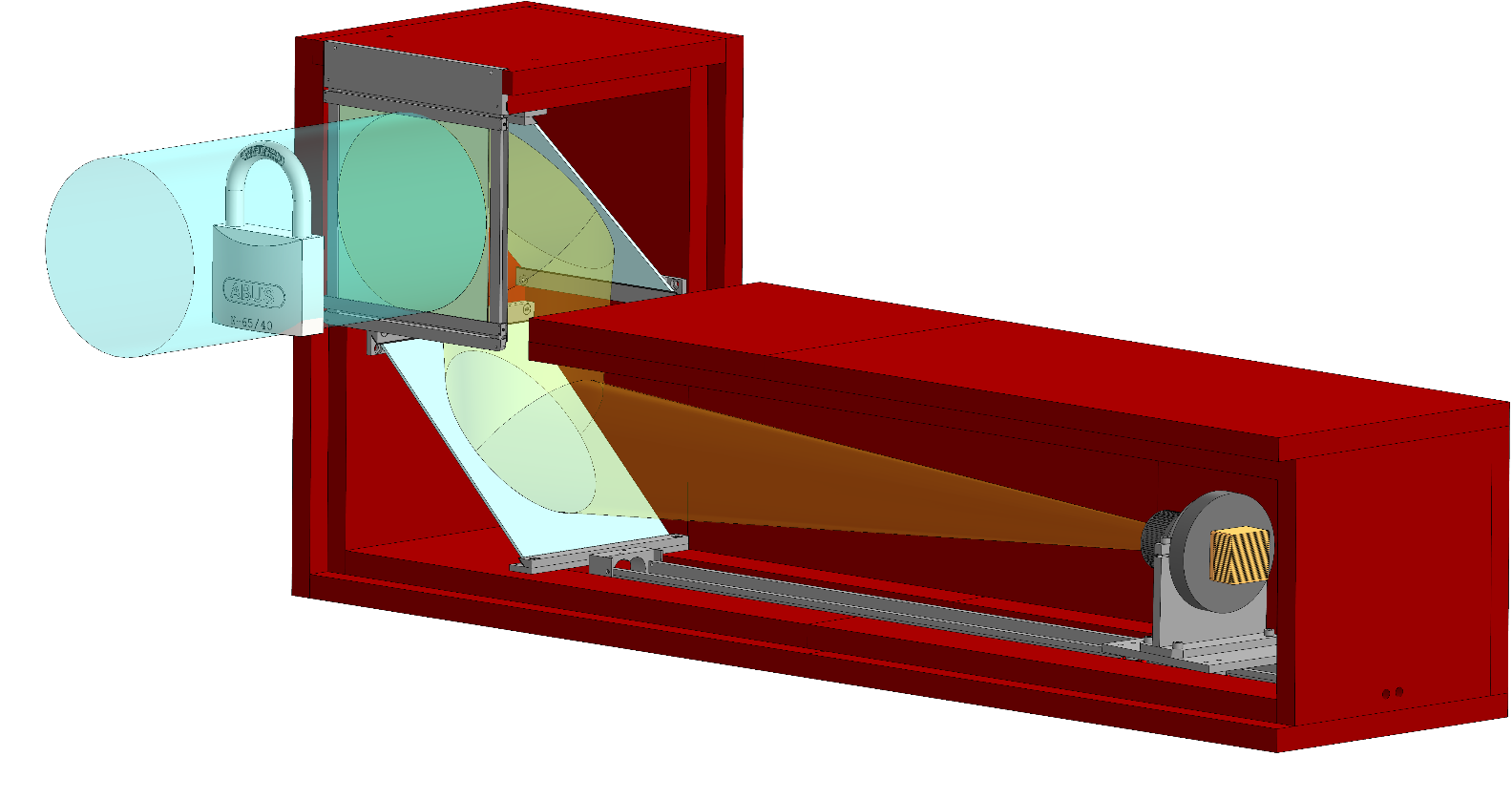Neutron radiography and tomography (NRT)
Resposible for the facilty
e-mail: This email address is being protected from spambots. You need JavaScript enabled to view it.
The neutron radiography and tomography methods are a powerful tool of non-destructive analysis, playing an important part in industrial and scientific research. The fundamental difference in the nature of neutron interaction with matter compared to X-rays provides additional benefits to neutron methods, including sensitivity to light elements, notable difference in contrast between neighboring elements or isotopes, high penetration into metals or heavy elements. All these features make neutron radiography and tomography highly demanded tools with a growing range of applications in industry, geophysics, paleontology, archeology and other various fields, including cultural heritage investigations. A neutron radiography and tomography facility operates at the IBR-2 high-flux pulsed reactor. The main parameters of this facility are listed below.




Fig. 1. At the top: The layout of the neutron radiography and tomography facility on the 14th beamline of the IBR-2 high-flux pulsed reactor. The length of the collimator system is 11 m, and the linear dimensions of the neutron beam at the output of the system are 20×20 cm. The goniometer is used for performing the neutron tomographic experiments. A specially constructed detector system based on a high-resolution CCD camera is used for neutron detection. At the bottom: a primary schema of the neutron radiography experiment: a neutron radiographic image of the object is formed using the scintillator screen. Neutron radiography image is recorded by means of the CCD video camera.
Several neutron radiography images, as examples, are shown in Figure 2.

Fig. 2. Neutron radiography images of metal casing hard drive, padlock and part of turning lathe.
Table 1. Main parameters of the neutron radiography station at the IBR-2 reactor
|
L/D ratio Aperture diameter D Distance between input aperture and sample L Beam dimension: Field of view (FOV) Neutron beam flux |
200-2000 10-50 mm 10 m 20x20 cm2 5.5(2)x106 n/cm2/s |
|
CCD camera type Active pixels Pixel size (µm) CCD chip area (mm) Digitization Cooling method |
VIDEOSCAN-11002-2001
4008x2672 9x9 12 Bits Peltier element |
| Scintillator screen specifics | 6LiF/ZnS scintillator Gadox scintillator |
| Spatial resolution |
134 µm |
| Imaging data processing | ImageJ, H-PITRE, VGStudio MAX 2.2 software |
References
1. Kozlenko D.P., Kichanov S.E., Lukin E.V., Rutkauskas A.V., Bokuchava G.D., Savenko B.N., Pakhnevich A.V., Rozanov A.Yu., Neutron Radiography Facility at IBR-2 High Flux Pulsed Reactor: First Results, Physics Procedia 69, 87 – 91 (2015).
2. Kozlenko D. P., Kichanov S. E., Lukin E. V., Rutkauskas A. V., Belushkin A. V., Bokuchava G. D., Savenko B. N. Neutron radiography and tomography facility at IBR-2 reactor, Phys. Part. Nuclei Lett., 13: 346 (2016).
3. E.V. Lukin, D.P. Kozlenko, S.E. Kichanov, A.V. Rutkauskas, G.D. Bokuchava, B.N. Savenko “First attempts on energy-selective neutron imaging at IBR-2”, Physics Procedia, 69, 271 – 274 (2015).
4. S.E. Kichanov, D.P. Kozlenko, T.I. Ivankina, A.V. Rutkauskas, E.V. Lukin, B.N. Savenko “The Neutron Tomography Studies of the Rocks from the Kola Superdeep Borehole”, Physics Procedia, 69, 537 – 541 (2015).
5. S. Kichanov, I. Saprykina, D. Kozlenko, K. Nazarov, E. Lukin, A.
Rutkauskas, B. Savenko, “Studies of Ancient Russian Cultural Objects Using the Neutron Tomography Method” J. Imaging, 4(2), 25 (2018) 6. S. E. Kichanov, D. P. Kozlenko, E. V. Lukin, A. V. Rutkauskas, E.
A. Krasavin, A. Y. Rozanov, B. N. Savenko “A neutron tomography study of the Seymchan pallasite”, Meteoritics & Planetary Science, 53, 10,
2155-2164 (2018)
7. S.E. Kichanov, D.P. Kozlenko, A.K. Kirillov, E.V. Lukin, B., Abdurahimov, N.M. Belozerova, A.V. Rutkauskas, T.I. Ivankina, B.N. Savenko “A structural insight into the Chelyabinsk meteorite: neutron diffraction, tomography and Raman spectroscopy study”, SN Applied Sciences, 1:1563 (2019).


